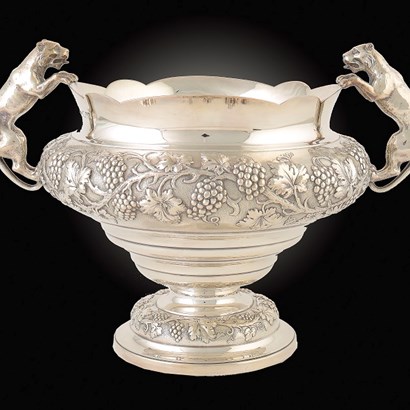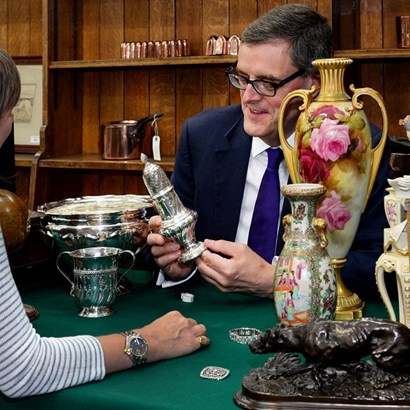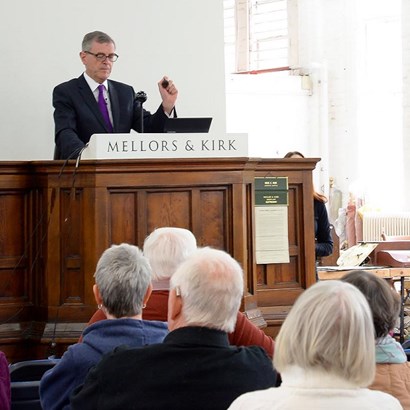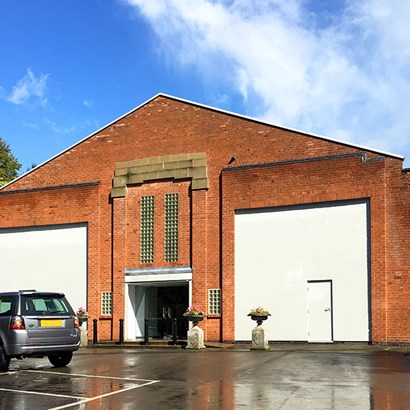Auction Insights
Valuation Days
A £2 car boot sale bargain that looks set to make £1,500 made somebody’s day this week.
A recent crop of Valuation Roadshows across Nottinghamshire have produced some interesting surprises. Usually pleasant, often rewarding and fortunately seldom disappointing are the treasures that I find in boxes and carrier bags placed on the table before me. Whether you shop at M & S or Morrisons ‘unexpected items in the bagging area’ are the valuer’s speciality.
This week at Ravenshead one gentleman came in with a walking stick. Although that’s not unusual, this visitor was not in need of it. He needed it even less when I estimated it at £1,000 to £1,500. It had recently been picked up at a car boot sale for – astonishingly – only £2!
It is a very good example of 19th century scrimshaw, the handiwork of whalers in the days of Captain Ahab and Moby Dick. Carved from whalebone and marine ivory, this type of folk art has long been highly prized by collectors. Whilst this example is genuine, fakes abound. Be especially aware of illegal, modern whale’s teeth that have been recently decorated and passed off as genuine 19th century examples of scrimshaw.
Another day, another place. This time Southwell but not to the races. The Minster Centre was almost full but with characteristic British reserve no-one seemed to mind queuing. The undoubted star turned out to be a huge and hugely impressive diamond brooch almost 4inches (9cm) wide. It could be either worn as one stunning piece or as a pair of lapel clips. Apparently the owner’s late husband had bought it for her but the lady had – and who can blame her – been somewhat reluctant to wear it. At £8,000-10,000 it will be a much admired feature of the March Fine Art Sale at The Auction House. Even though I write this on Valentine’s Day, gentlemen are sometimes not the savviest bidders for jewellery. After all, they’re not going to wear it.
Its Retford and we welcome at the Well Centre the good people of the town and surrounding villages. One visitor turns up with quite a large collection of 19th century surgical instruments including several in highly polished mahogany cases. Not for the squeamish, but all beautifully made many feature carved ebony handles, ideal for providing a firm grip but terrible for the patient. Eventually it was realised that the handles directly resulted in death from post-op infections.
These and a splendid example of a Victorian optical toy, the zoetrope, one of the earliest experiments in moving pictures, something which to the Victorians seemed miraculous, will also be sold in March.
Finally for something truly out of this world. Several rare and large glass photographic plates (transparencies) of the lunar surface dating from the end of the 19th century. Bought for a song in France recently they appeared at Dore Village Hall near Sheffield. Several were broken and incomplete but they went for £420 at a sale before Christmas.
So popular have these weekly and monthly events proved that I have had to recruit additional expertise. That’s not as easy as it sounds because whilst a specialised knowledge of many things matters, what matters even more is the intuitive ability to spot that sometimes almost invisible feature, or quality, that turns the ordinary into the truly special.
This gallimaufry of all things great and small is why to anyone with an interest in the past or a remotely enquiring mind, my job is so rewarding. Would I swap it for James Herriot’s? TV shows featuring antiques at auction, or a vet in muddy boots seem to resonate with people in a way which says much about our cultural values, identity and even our aspirations.
< Back to Auction Insights



